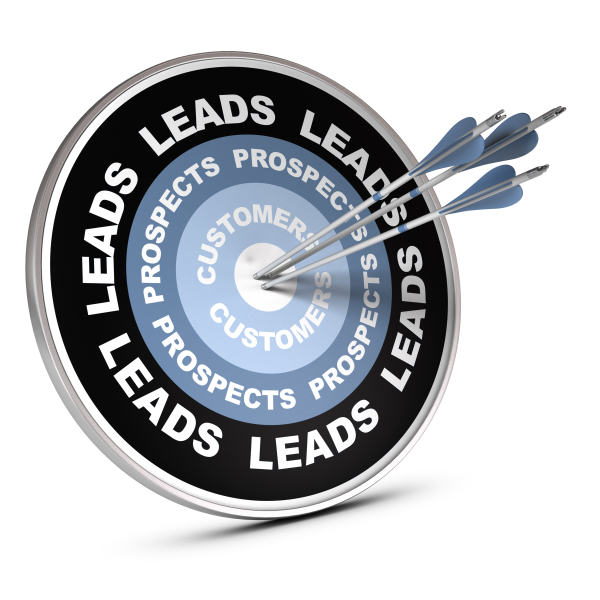
3 Tips for Turning Traffic into Qualified Inbound Marketing Leads
May 23, 2013
By Dolly Howard
Your elusive website's traffic. You know people are out there in need of your service or product, searching through Google and poking around your website, but how can you hook them, reel them in and convert them into a lead? And once they convert, what on earth do you do with them to turn them into a qualified lead that makes your sales team happy? Should you just send everything you get to sales and hope one buys?
Firstly, the answer to the last question should be a resounding "no". The last thing you want to do is send every inbound lead you get to sales. Why? Because the leads are not ready to be sold. Inbound leads are different than traditional outbound leads. But tha'ts ok! There are several ways to take your inbound leads and qualify them so that your salespeople love you.
Tip #1: Simplify Your Persona's Decision Making Process
One of the biggest challenges companies face is creating a clear conversion path for their traffic. More often than not, people fall into the trap of offering too many calls to action at once or worse not enough calls to action. The result is a website that resembles time square with so many ads that your personas' don't know where to look and can't concentrate long enough on one to decide if it's right for them, or your website is a desert with no water. So, what do you do?
- Align your webiste navigation aligns with your persona's needs: Navigation is where all of your website visitors look first. By adding a solution to your persona's most common problem in your navigation you save them time and in turn build trust.
- Strategically place calls-to-action (CTAs) that lead to landing pages on your website and align with the stages of the buying cycle: Creating a clear conversion path for your personas will guide them through your website and help you determine where they are in the buying cycle when they convert into a lead. When deciding where to place CTAs:
- Follow the typical thought process of your lead.
- Have a downloadable piece of content anywhere your persona needs it
- Put a CTA on every page of your website (where it makes sense)
- Link all CTAs to a landing page. This page is where you will gather information via a form. This is the only practical way to convert website traffic into inbound leads
- Be upfront about the benefits of your offers:
CTAs need to actionable and state exactly what the offer is. If you have a button on your website that says "whitepaper", what does that communicate? Not much except that you have a button that says whitepaper. So remember: - Add actionable text like download, try, learn, discover, etc to your CTAs, making traffic click and taking them to a landing page; repeat this process on your landing page when you'll collect their information on a form.
- Explain what the offer is about and the benefits of downloading it. Many times marketers try to describe what the offer is about instead of the benefits your potential leads gain from downloading it. Always talk about the benefits!
- Deliver what you advertise - no bait and switch tricks! This is especially important in email marketing. I'm sure you've seen subject lines that are simply catchy; they have nothing do to with the email inside. What do you do when that happens? Yep. You delete it or mark it as spam. Be up front. If it's a qualified lead they will want what you're offering.
TIP #2: Offer Content They Can't Refuse
What's the major theme in any inbound marketing strategy? You got it! Great content! Content is what drives people to your website. Content allows you to convert visitors into leads. Content is what drives leads back to your website and will ultimately help them decide to become customers. Plain and simple - content is king.
A few types of content to include in your content strategy are:
- Guides, whitepapers, ebooks, or any other downloadable PDF about your product or service and industry. Industry topics are key here. Most people need to learn a bit about your industry before committing to purchasing a product or service in your industry. Educate your potential leads through whitepapers, ebooks, and other references to build trust and encourage them back to your site and down the marketing funnel.
- Tips and tricks about your industry, product or service that teach something new, or confirm knowledge. This should be done in any piece of content you create.
- Testimonials and customer case studies to build trust with your new audience. Once I've learned everything about your industry and now I'm deciding between you and your competitor, testimonials and case studies become extremely important. If you don't have them yet, ASK your past customers or clients. Always ask. Someone will help you.
- Blogging, blogging, and more blogging. I can't stress this enough. Blogging is what keeps your website fresh. It's where your new visitors typically land first. Blogging helps to educate your potential leads at a high level and guides your visitors to landing pages where they can become leads. You need to blog - end of story.
TIP #3: Nurture Your Leads Down the Conversion Path
Now that you have traffic and you're getting leads from your downloadable PDFs, what happens next? You and I both know that a lead that converts on a whitepaper they saw on blog is most likely not ready to buy. They are researching and digging for more information about how to solve their problem. So, how do you get them to a place where they are ready to buy?
Consider the following:
- Do your marketing offers follow the stages of the buying cycle? - you probably know that you need to have offers people can download on your website, but what kind of offers are you giving to your potential customers? Layout your content. If everything falls into one phase of the buying cycle, you're missing something. How can you engage your prospects and leads with one kind of offer? You can bet they will not want to receive the "Buy Now!" offer over and over again.
- Are your forms asking the right questions at the right time? - one of the most important components of lead generation is asking the right questions. What qualifies a lead? Is it their industry, their age, their yearly revenue? If you're not asking these questions throughout the conversion process it will be extremely difficult to segment the hot leads from the so-so leads. Additonally, you want to make sure your forms align with the buying cycle. Think of it like dating - you don't ask the entire personal history of a person on the first date, but as things get more serious and you build trust, ask away!
- Are your email campaigns segmented by persona and stage of the buying cycle? - email is a powerful and useful tool. More often than not marketers send promotional email campaigns to their entire contact database. Stop doing that! You're probably thining, What!? Is she serious? Yes, I'm serious. It's true, sometimes promotional offers make sense to send to everyone (like when a product launches) but it shouldn't be your only strategy. You have different kinds of personas. You have different kinds of offers that relate to different phases in the buying cycle, so utilize them! Start segmenting your leads based on who they are and what they want. Only email offers that help move each persona down the buying cycle. Appeal to the persona's needs and reap the rewards!

About the author
Dolly Howard was formerly Director of Marketing for SmartBug Media. Previously she worked as a senior marketing consultant leading SmartBug Media clients in strategy for lead conversion improvement and total marketing ROI. As a past HubSpot employee, Dolly is excited to share her knowledge and help enterprise companies grow their business. Read more articles by Dolly Howard.






